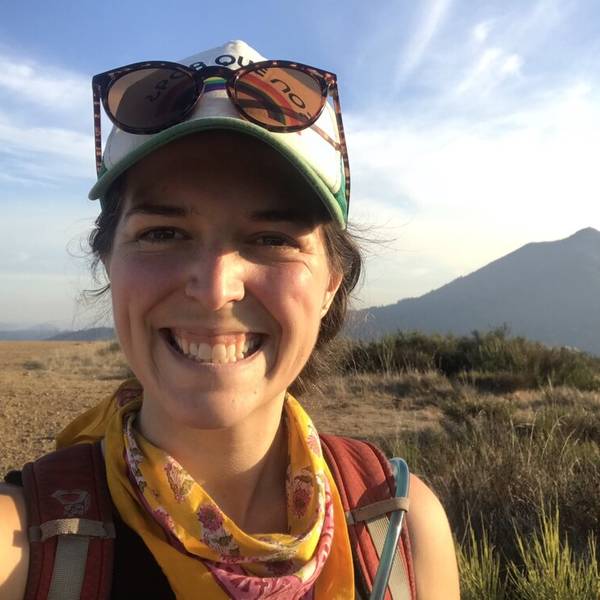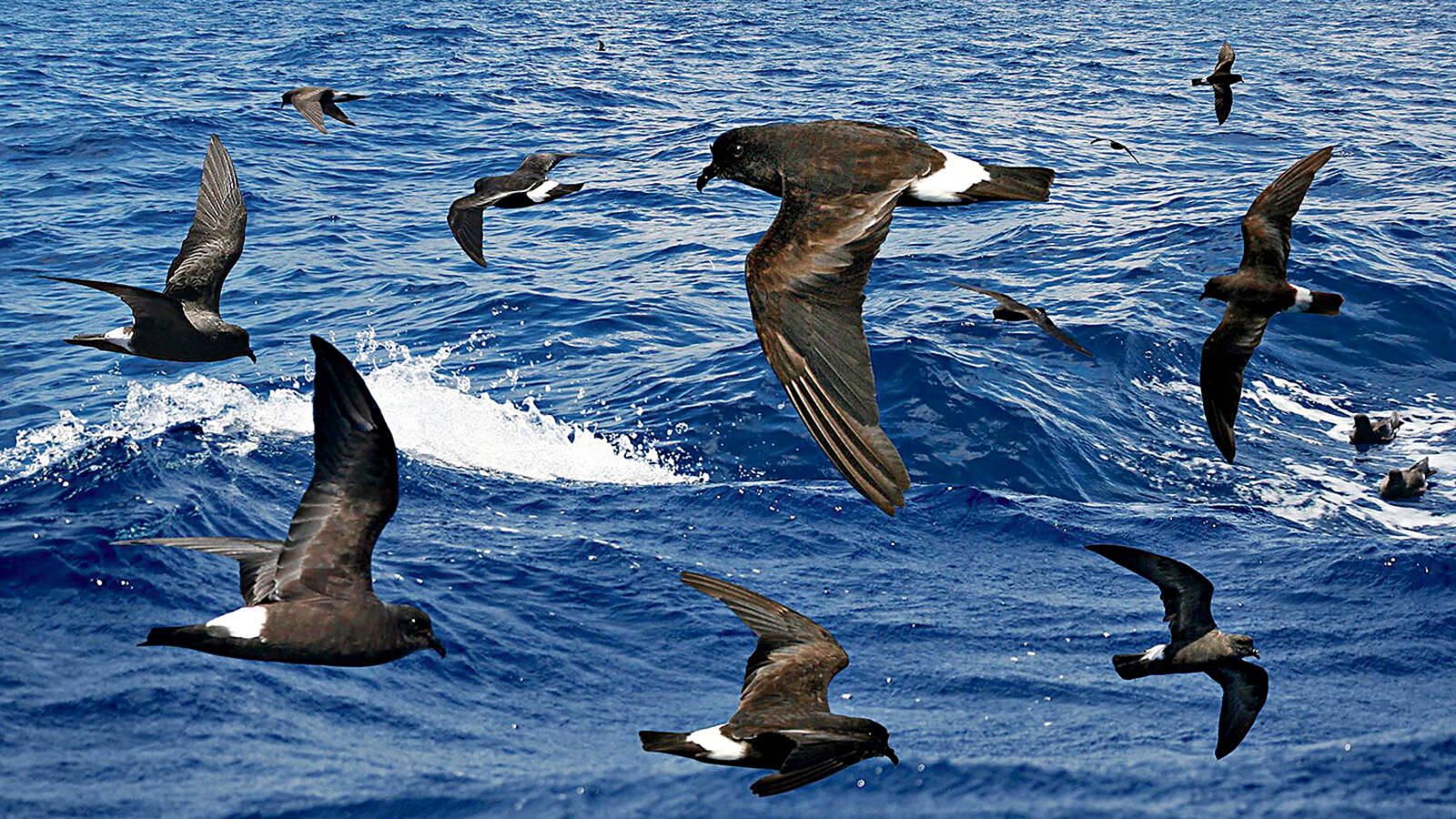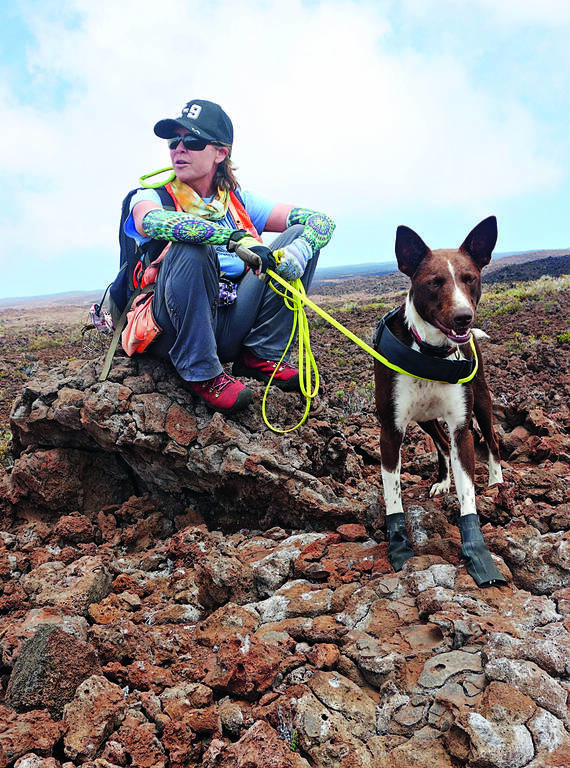Summer 2023
Bird’s Best Friend
Turning to the very goodest dog in the race to save Hawaii’s endangered seabirds.
Biologists at Hawai‘i Volcanoes National Park had long wondered about ʻakēʻakē. They knew these wide-ranging, robin-sized seabirds made at least occasional visits to the sere, spiky lava fields high up on the shoulder of Mauna Loa. Researchers occasionally heard their calls late at night, and every so often, they’d come across a carcass. But no scientist had ever reported a live ʻakēʻakē, nor evidence of their nests, in the park.
The ʻakēʻakē “is one of the most elusive seabird species,” said Charlotte Forbes Perry, a biologist with the Pacific Cooperative Studies Unit of the University of Hawaii who’s based at Hawaiʻi Volcanoes. For one thing, the ʻakēʻakē’s habits make them hard for humans to find: The birds spend most of their lives on the wing, far out at sea. They lay eggs and raise their chicks in tiny burrows on steep cliffs or in the crevasses of remote, forbidding lava fields and only emerge from their burrows at night. And unlike other seabird species that share their habitat, ʻakēʻakē don’t leave any traces of their presence, such as feathers or poop outside their burrows, to point researchers in the right direction.
ʻAkēʻakē are a distinct population of band-rumped storm petrels, which roam both the Pacific and the Atlantic oceans.
USFWSTwo-year-old Slater with biologist Michelle Reynolds, who adopted him when he was a puppy.
HAWAI'I VOLCANOES NATIONAL PARK
ʻAkēʻakē are also hard to find because there don’t seem to be many left to find. “It’s known from the historical and archaeological records that the species was once widespread throughout the Hawaiian Islands,” said Brad Keitt, director of the oceans and islands division at the American Bird Conservancy. “They were common enough that they were likely even a food source for Native Hawaiians.” But after hundreds of years of habitat loss and predation from introduced species such as cats, rats and mongooses, it’s estimated that perhaps 240 pairs of ʻakēʻakē remain statewide, and the U.S. Fish and Wildlife Service listed the birds as endangered in 2016. (The ʻakēʻakē are a distinct population of band-rumped storm petrels, which nest and roam widely throughout the Atlantic and Pacific oceans, and number perhaps 150,000 worldwide.)
With so little known about their distribution, needs and behaviors, park staff and conservationists throughout Hawaii have struggled to intervene effectively on the birds’ behalf. “For years, we were all like, ‘We’ve got to find one of these birds,’” Forbes Perry said. “But we started to realize we couldn’t do it on our own.” What they needed was a specialized technology that could quickly but methodically scan vast acres of rugged terrain, searching for some kind of subtle seabird signal that exists beyond the limits of human perception. In other words, said Forbes Perry, “we needed a dog.”
I have been monitoring seabirds on Mauna Loa for 16 years, and this was the first live, healthy, young seabird I have seen.
Enter Slater, a 2-year-old McNab collie with reddish-brown fur, big, perky ears and a singular drive to sniff out endangered Hawaiian seabird burrows. “So many good things happen for Slater when he smells that odor: He gets a party thrown for him, he gets to jump up all over people, and everyone tells him how great he is,” said Michelle Reynolds. She’s a wildlife biologist who adopted Slater as a puppy from a local ranch and trained him to detect the odors of ʻakēʻakē and another species of endangered seabird, the ‘uaʻu — or Hawaiian petrel. “Slater works for 100% all-natural beef hot dogs, but he’s not actually that food motivated,” she said. “He’s in it for the attention and the party.” Forbes Perry knew that a trained detector dog had located the first known ʻakēʻakē burrow on the Big Island in 2015, at an Army base called the Pōhakuloa Training Area. And in 2019, Hawaiʻi Volcanoes staff picked up ʻakēʻakē nesting calls on audio recorders they’d set out in a petrel colony 8,700 feet up on a remote flank of Mauna Loa, which helped narrow down the likeliest terrain. So in September 2022, Forbes Perry, Reynolds and Slater hitched helicopter rides to the edge of the colony and began the search in earnest.
Do Fence Me In
Forbes Perry is part of a team of researchers monitoring ‘ua‘u on the mountain since the early 1990s. For humans anyway, the hunt for petrel burrows is grueling: It involves spending long days under direct, high-elevation sun, traversing sharp lava rock, crouching down to peer into cracks and keeping a close eye out for signs of activity at the burrows’ mouths. Sometimes Forbes Perry finds evidence of successful ‘ua‘u breeding, such as a chick’s downy feathers or fresh streaks of fishy-smelling bird poop outside a burrow, indicating that the parents have recently visited to drop off food. But over the years, she’s also come across more distressing signs: abandoned burrows, partially eaten eggs, even petrel carcasses. To stanch the loss of seabirds to introduced predators at Hawaiʻi Volcanoes, park staff enclosed this 644-acre petrel colony in a cat-proof fence in 2016.
On the first day of their search, Reynolds and Forbes Perry hustled to keep up with Slater as he pinged across the treacherous terrain, nose alternatively up in the air and to the ground. “We work on-leash, so that means I have to go as fast as he goes,” Reynolds said. “He can’t search if I keep him at a heel — he needs to be able to pick up the wind and explore in order to catch the odor, so we just have to keep up.”
Early on the second day, Slater suddenly froze, his nose pointed down at a tiny hole in the rock. “That’s his signal for, ‘Here, I found it,’” Reynolds said. Forbes Perry dropped her pack, got down on her hands and knees and shined a flashlight into this little hole. She saw a mass of gray fluff and then realized the fluff was breathing: It was a plump, healthy ʻakēʻakē chick.
“I was ecstatic,” Forbes Perry said. (As, presumably, was Slater, who got his love fest after his find.) “I have been monitoring seabirds on Mauna Loa for 16 years, and this was the first live, healthy, young seabird I have seen.” A few weeks later, she returned to the burrow and installed a motion-activated camera, which captured the timing and frequency of the adults’ visits and the chick’s early forays from its burrow. With data like this, and with a plan to spend more time out on the mountain trying to keep up with Slater during the 2023 breeding season, the park could soon have the information it needs to help the ‘akē‘akē recover. Rats wriggle into petrel burrows and steal eggs, and cats have been caught on video attacking ‘ua‘u adults as they come and go from the burrows, so finding more burrows will help biologists figure out where to build more fences to keep predators out of petrel breeding territory.
Meanwhile, Reynolds said locating hidden seabird burrows is just one of the many ways conservation biologists could benefit from a closer partnership with dogs like Slater. Detector dogs can sniff out predators inside protected habitat, as well as invasive species or outbreaks of diseases that threaten native plants and animals at the early stages of spread — before signs are obvious to human observers, but when it may be easier to intervene. These skills could come in handy for conservationists everywhere, but the need is particularly acute in Hawaii, where native species haven’t evolved defenses against introduced predators, competitors or diseases. “I’m encouraging more conservation biologists to work with dogs, especially those that are frustrated with the scope and scale of the problems, and of the resources we need to protect,” Reynolds said. “Because, boy, dogs could save us all a lot of heartache, time and effort.”
About the author
-
 Julia Busiek Author
Julia Busiek AuthorJulia Busiek is a writer living in Oakland. She's worked in national parks in Washington, Hawaii, Colorado and California.





